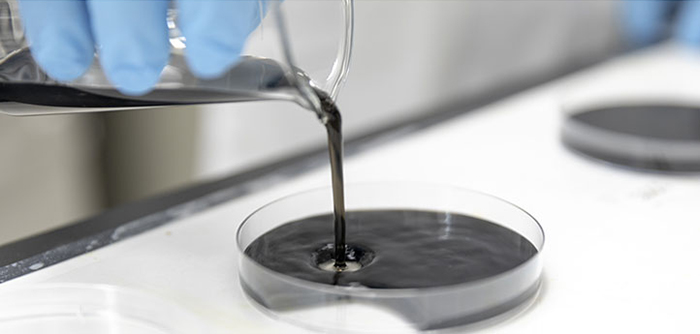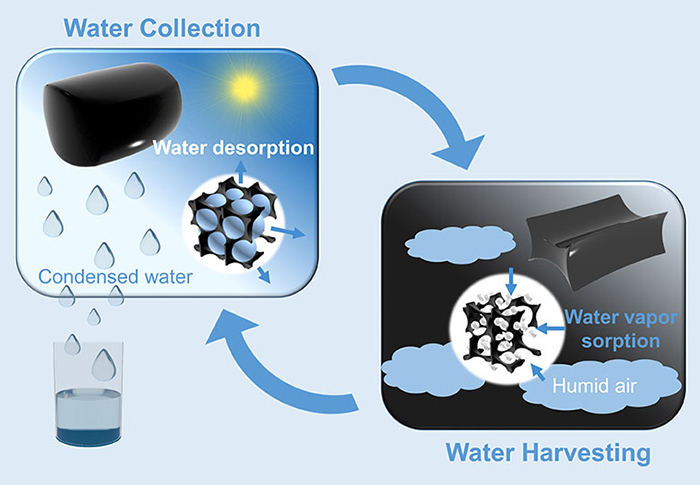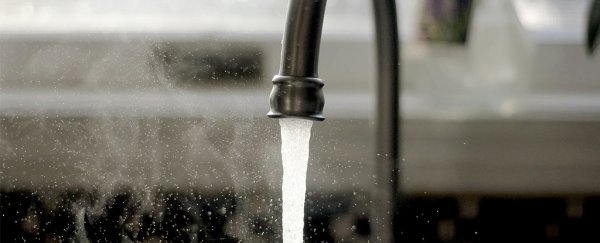Our environment is changing, and changing fast, putting pressure on our hardworking scientists to come up with ever more ingenious ways of meeting the needs of humankind – like pulling drinkable water right out of the air, in this case.
A new prototype device, developed at the King Abdullah University of Science and Technology (KAUST) in Saudi Arabia, is able to absorb water and then release it on demand. It's the sort of invention that could prove invaluable to people living in arid, desert regions, where water is already scarce.
Key to the device is a special hydrogel based on the salt calcium chloride. It can prove irresistible to water, but usually turns into a salty liquid as it absorbs vapour. But thanks to the engineers' innovation, here the hydrogel mixture keeps the whole thing in solid form until the water is needed.
 The hydrogel being poured. (KAUST)
The hydrogel being poured. (KAUST)
"The hydrogel's most notable aspects are its high performance and low cost," says one of the team, Renyuan Li.
With an estimated 13 trillion tons of water vapour in the atmosphere, being able to harvest some of that water to keep people hydrated would be a major breakthrough, especially for the hundreds of millions without a suitable water source. It's something numerous research teams are busy investigating.
And while calcium chloride has been looked at before, making it practical as a material for storing water has been difficult. Here the team helped solve the problem by converting the salt into a polymer so it keeps its shape until heated; additionally, carbon nanotubes would then help release the water.
The idea is the device could capture water from the air overnight, then release it when heated during the day.
That's exactly how the prototype tested by the researchers operated: 35 grams (1.23 ounces) of the hydrogel was able to capture 37 grams (1.31 ounces) of water during a night with a relative humidity of around 60 percent.
The next day, 2.5 hours of sunshine was enough to release 20 grams (0.71 ounces) of the water, which was collected in the device ready to drink. The hydrogel is then ready to use again, the researchers report.
 Water is collected then released on a cycle. (KAUST)
Water is collected then released on a cycle. (KAUST)
However the scientists aren't satisfied yet – they're hoping to tweak the design so that water is released continuously.
There's plenty of competition out there for these potentially life-saving devices, which we think is a good thing.
Earlier this year teams from the US demonstrated a device that used a specially engineered metal to capture water – this is another invention that doesn't need a separate energy source to work.
Another team of scientists have created a synthetic material inspired by the Namib desert beetles, which also shows promise as a way of condensing and capturing liquid water from the air where needed.
With all these initiatives, the challenge is to get them from lab prototype into commercial product, but this new hydrogel-based device is ticking a lot of the necessary boxes.
"This type of atmospheric water generator is cheap and affordable, works perfectly with a broad range of humidity, does not need any electricity, and thus is especially suitable for clean water production in remote areas," write the researchers.
The research has been published in Environmental Science & Technology.
